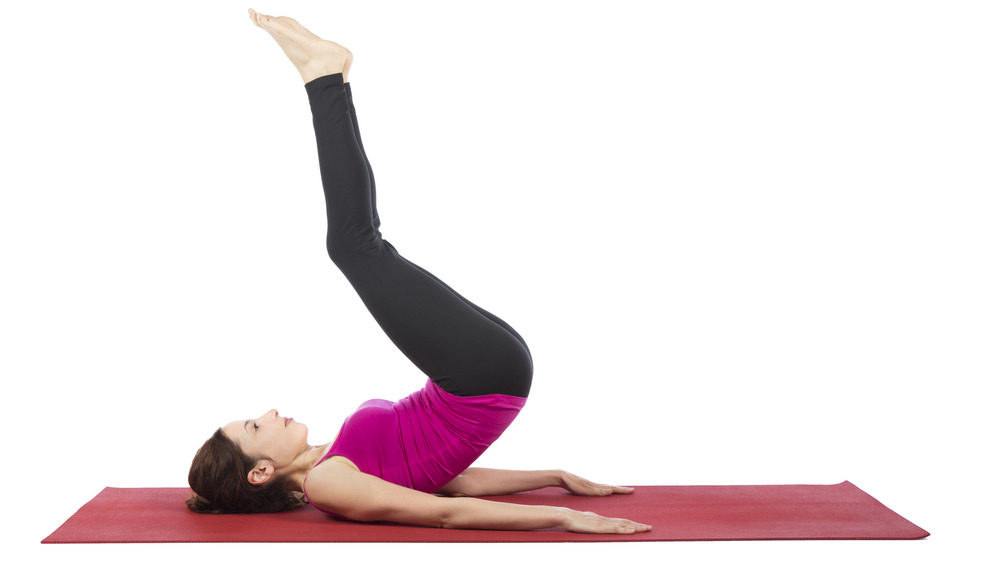Why You Should Try Reverse Crunches
Searching for exercises that are easy on the neck, knees, and spine can be quite a feat in a world where squatting is considered a superior movement; however, there are many exercises that do indeed meet those needs. The reverse crunch is an abdominal exercise, great for beginners and those of all fitness levels, that focuses on the six-pack, or, the rectus abdominis (via Healthline). According to SWEAT, the reverse crunch can also engage the oblique and transverse abdominus muscles, offering a broader workout for your core.
This type of crunch is more gentle on your spine than sit-ups, as most of your back stays on the ground, and is easy on the neck, which you won't be pulling on, like you do with a traditional crunch. Another bonus of choosing the reverse crunch is, compared with similar ab exercises, you will get a killer workout, needing fewer repetitions.
How to perform a reverse crunch
According to physical therapist Dr. John Rusin, there are varied ways to perform a reverse crunch (via Stack). Lying on your back, Rusin prefers using a bench, as you can stabilize yourself by holding the upper edge, and boost muscle tension without experiencing pain. If you do not have access to a bench, a mat or towel on the floor is fine — with your arms lowered at your sides and knees raised at a 90-degree angle, you will roll your lower body up toward your head.
The reverse crunch, when done properly, does not lift the mid-back from the ground — only the hips and lower back come up. Rusin emphasizes that this is a slow movement, and when using the bench, lowering the knees too fast can hyperextend the lumbar spine, possibly causing injury. The reverse crunch can be done at home, or anywhere, as no equipment is necessary, making it a great add on to your core workout.


